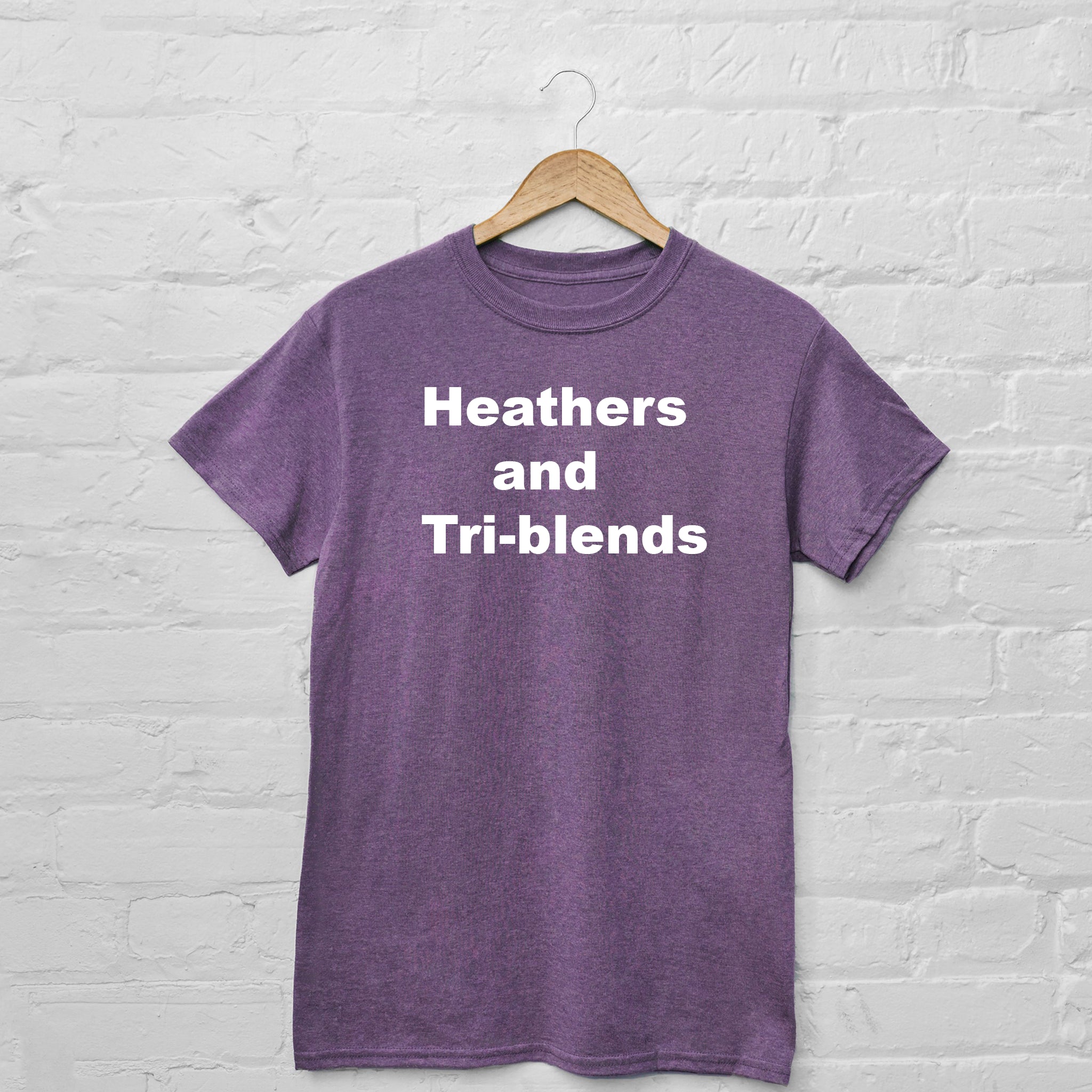Your Cart is Empty
We will be closed december 25th & 26th, and January 1st & 2nd in observation of the holiday
We will be closed december 25th & 26th, and January 1st & 2nd in observation of the holiday

The heather / tri-blend has a very soft drape and is a popular choice of customers. However, printing on heather / tri-blend gives screen printers several challenges. Heather shirts get their appearance by being made of three different fibers, thus the tri-blend. In this article we will take a look at the challenges each fiber brings to the printer and suggestions for printing around those challenges.
The three fibers that make up a Tri-blend are - Cotton, Polyester and Rayon.
Cotton - This is the easiest fiber of all. It’s soft and lends itself to
Polyester - Has temperature restrictions and possible dye migration. Inks made
Rayon - Severe heat restrictions. If over heated you could scorch the shirt. Rayon is not a
Water base and Discharge method - While you can discharge a tri-blend you may have varying results over the print. This is because the cotton fibers will discharge, but the polyester and rayon will not. If you select this method, know that your prints may vary shirt to shirt. An advantage to this method is you can print wet on wet, without
SOFT HAND - Tri-Blends are light and soft, so your ink deposit needs to be as light as possible while still providing good coverage.
MESH COUNT - Try using a higher mesh count for a thinner ink deposit.
MESH TENSION - Properly
SQUEEGEE - A harder squeegee will aid in controlling the ink deposit.
Design - Consider alternative design elements - The vintage look works well with heather/tri-blends. A washout look with uneven pigmentation matches the design of the fabric. This may allow you to skip the under base and not be so concerned with opacity.
With Tri-blends gaining in popularity, knowing your challenges and planning ahead with your customer will ensure a headache free print.
REMEMBER: TEST TEST TEST